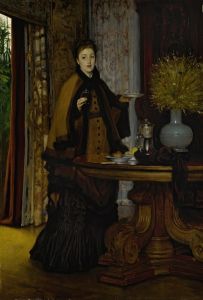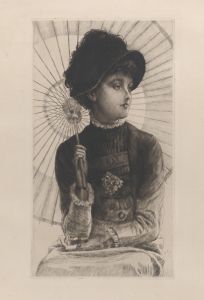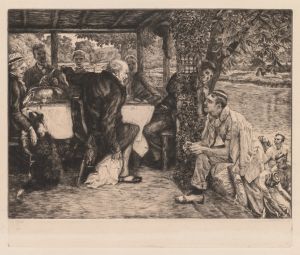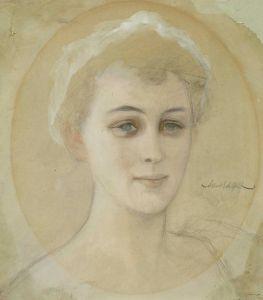
Portrait Of The Marquis And Marchioness Of Miramon And Their Children
A hand-painted replica of James Tissot’s masterpiece Portrait Of The Marquis And Marchioness Of Miramon And Their Children, meticulously crafted by professional artists to capture the true essence of the original. Each piece is created with museum-quality canvas and rare mineral pigments, carefully painted by experienced artists with delicate brushstrokes and rich, layered colors to perfectly recreate the texture of the original artwork. Unlike machine-printed reproductions, this hand-painted version brings the painting to life, infused with the artist’s emotions and skill in every stroke. Whether for personal collection or home decoration, it instantly elevates the artistic atmosphere of any space.
"Portrait of the Marquis and Marchioness of Miramon and their Children" is a notable painting by the French artist James Tissot, completed in 1865. This work is an exemplary representation of Tissot's skill in capturing the elegance and sophistication of the French aristocracy during the mid-19th century. The painting is a group portrait that features the Marquis and Marchioness of Miramon along with their children, showcasing the family's status and affluence.
James Tissot, born Jacques Joseph Tissot in 1836 in Nantes, France, was a prominent painter known for his detailed and fashionable depictions of contemporary society. He studied at the École des Beaux-Arts in Paris and was influenced by the works of Jean-Auguste-Dominique Ingres and Eugène Delacroix. Tissot's career flourished in Paris, where he became associated with the Impressionists, although his style remained distinctively more aligned with realism and detail-oriented portraiture.
The "Portrait of the Marquis and Marchioness of Miramon and their Children" is a testament to Tissot's ability to convey the nuances of high society through his art. The painting depicts the family in an opulent setting, reflecting their wealth and social standing. The Marquis, René de Cassagne de Beaufort, and the Marchioness, Thérèse-Stephanie-Sophie Feuillant, are portrayed with their children in a serene and composed manner, exuding a sense of grace and dignity.
Tissot's attention to detail is evident in the intricate rendering of the clothing and the luxurious surroundings. The attire of the family members is meticulously painted, highlighting the textures and patterns of the fabrics, which were indicative of their social class. The setting, likely a room in their residence, is adorned with elegant furnishings and decor, further emphasizing the family's aristocratic lifestyle.
This painting is also significant for its historical context, as it captures a moment in time when the French aristocracy was experiencing changes due to political and social upheavals. The mid-19th century was a period of transformation in France, with the decline of the traditional aristocracy and the rise of the bourgeoisie. Tissot's work provides a glimpse into the lives of the aristocracy during this transitional period, preserving their legacy through his art.
The painting is part of the collection at the Musée d'Orsay in Paris, which houses an extensive array of 19th-century art. The Musée d'Orsay is renowned for its collection of Impressionist and Post-Impressionist masterpieces, and Tissot's work is an important component of its holdings, offering insight into the diverse artistic movements of the time.
In summary, "Portrait of the Marquis and Marchioness of Miramon and their Children" is a distinguished work by James Tissot that exemplifies his mastery in portraiture and his ability to capture the essence of the French aristocracy. Through his detailed and realistic approach, Tissot provides a window into the world of the 19th-century elite, making this painting a valuable piece of art history.


















